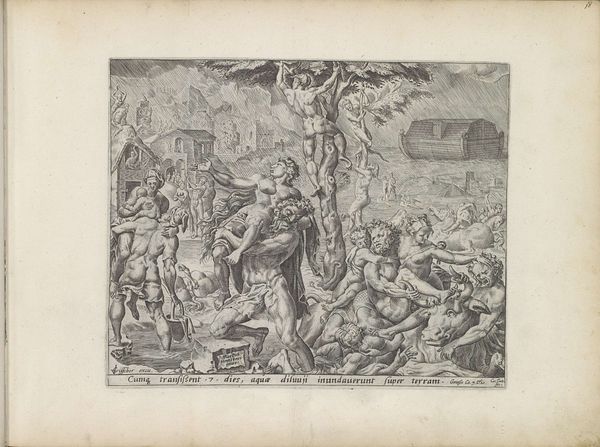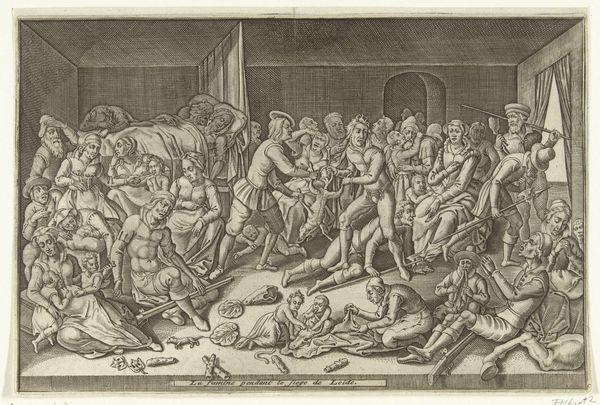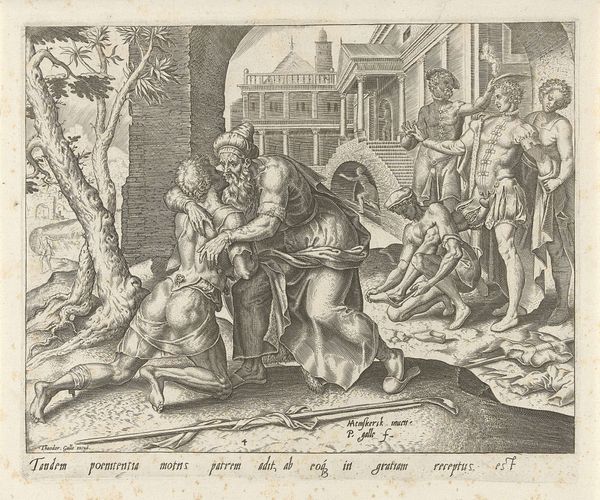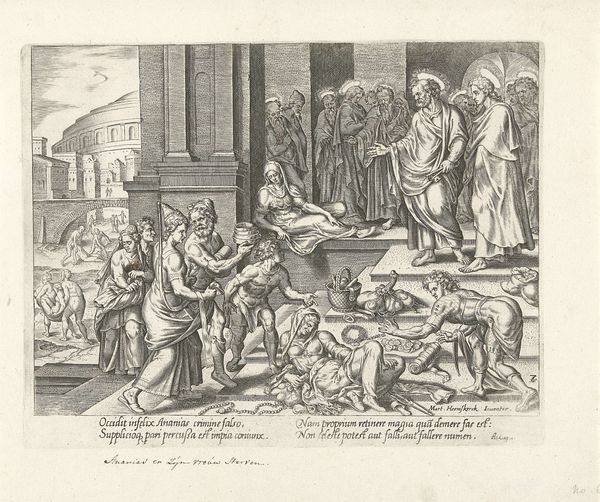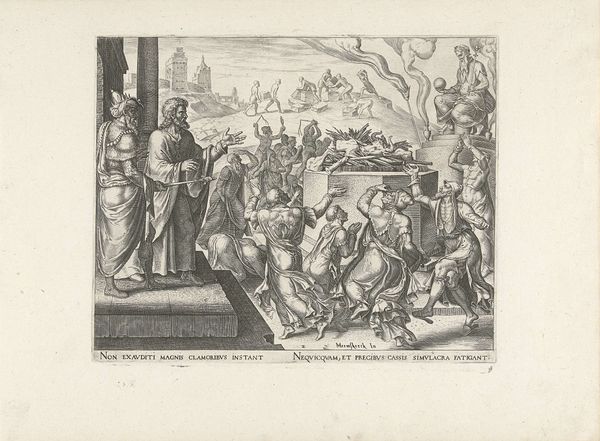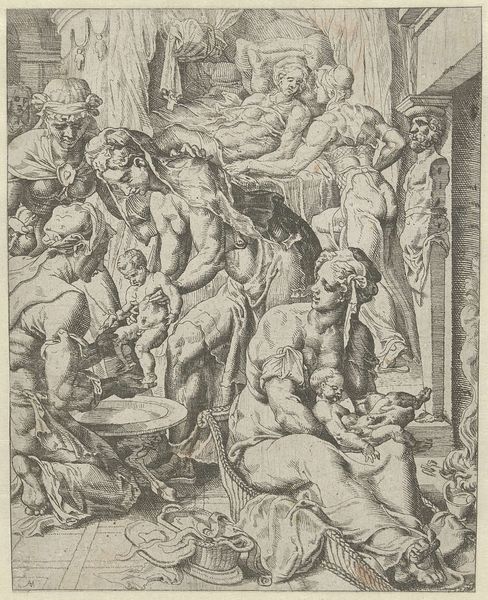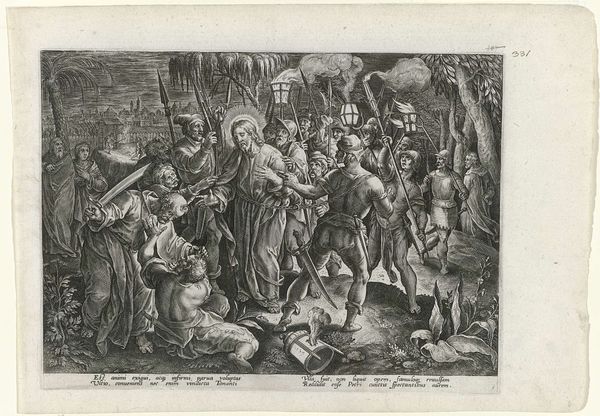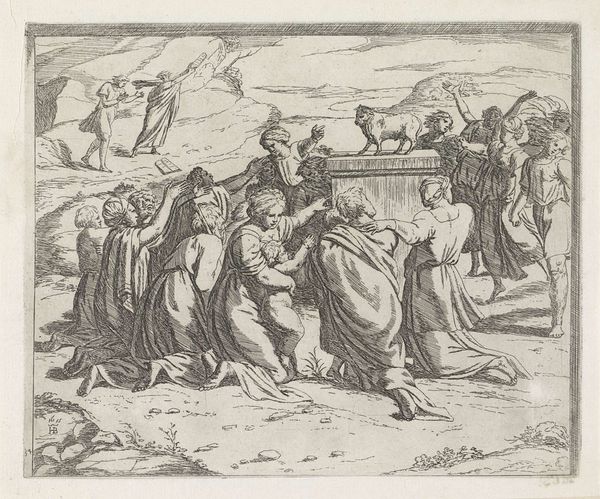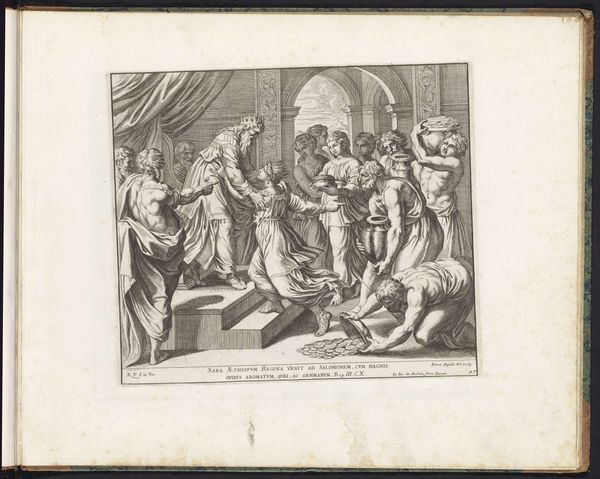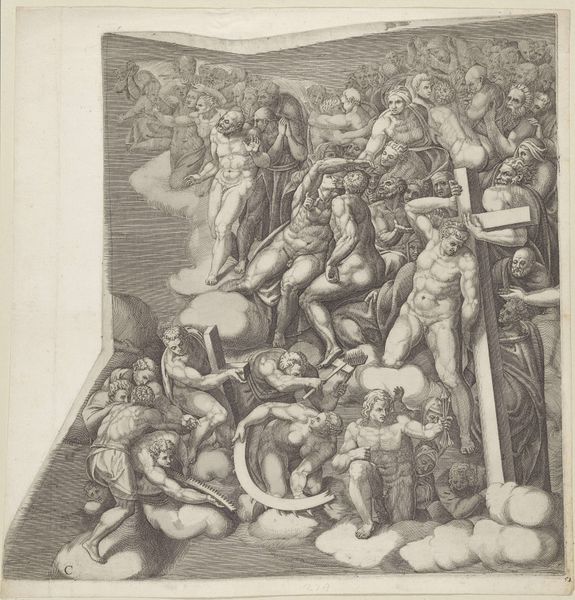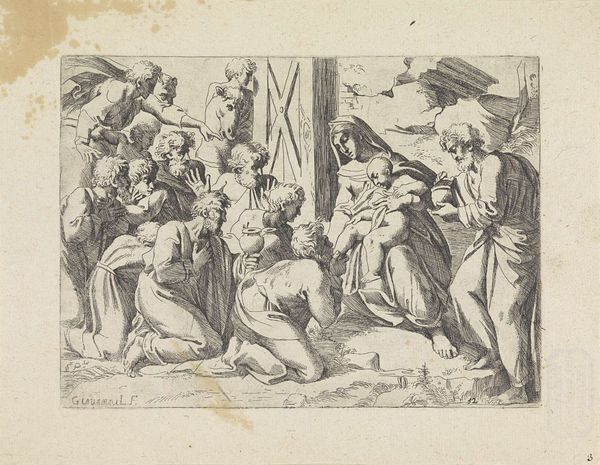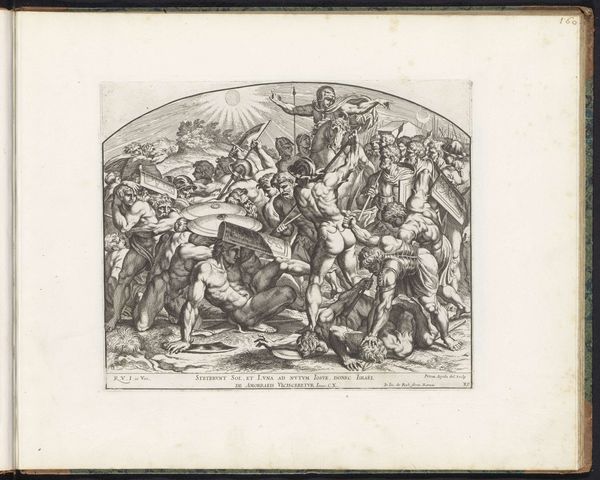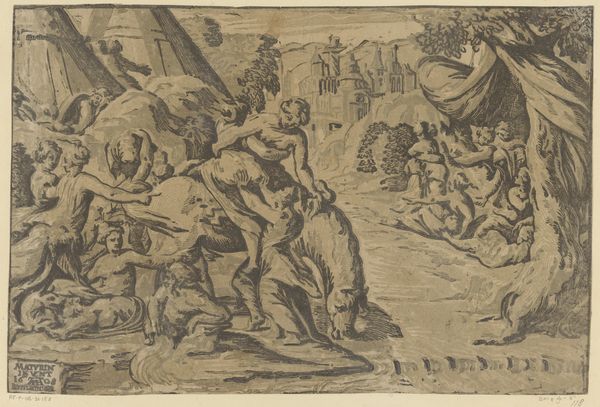
#
pencil drawn
#
toned paper
#
light pencil work
#
pencil sketch
#
personal sketchbook
#
pen-ink sketch
#
pen work
#
sketchbook drawing
#
pencil work
#
sketchbook art
Dimensions: height 201 mm, width 246 mm
Copyright: Rijks Museum: Open Domain
Curator: Let’s have a look at this print, “Noah Thanking God for the Deliverance from the Ark." It was conceived between 1558 and 1643. The print is on display here at the Rijksmuseum. Editor: It feels densely packed. Look at how all of these figures, human and animal, seem almost piled upon one another. What materials did Cornelis Cort use? Curator: Well, it seems the artist rendered this scene with pen and ink, with a light pencil underpinning. Editor: Right, it strikes me that the cross-hatching defines form without creating much depth; the tone is built through line work, so it feels rather flat overall, doesn’t it? This really emphasizes the almost anxious energy coming from the figures. Look at how everyone gestures upward toward those divine rays. Curator: The print visualizes a key moment from the Book of Genesis. Noah, having survived the flood, offers a sacrifice to God in gratitude for their safety and deliverance, and you see how this scene offered a very potent message during a time of great social and religious upheaval. Editor: What intrigues me is the relationship between humans and animals, it seems that some sort of pact is happening in a time of chaos. See, it’s almost utopian in a way, right? But, of course, the physical act of creating this print, reproducing images of faith… How does that square with the message? Curator: Printmaking was a rapidly expanding industry at this time, allowing for wider distribution of not only religious iconography, but classical stories as well. Images reinforced piety, offered moral instruction, but also reinforced established authority and worldview. The printing and sale of these images definitely formed part of an important capitalist shift that changed society irrevocably. Editor: Looking closely I can imagine Cort's hand moving swiftly across the plate, the repetitive labor mirroring the sheer volume of stories to be told. So it shows not only technical ability, but also gives us the sensation that images have to be constructed in layers, both literally and metaphorically, especially when seen from this historical lens. Curator: Precisely. By examining the image within its social and cultural context, we can better understand its role and significance. Editor: And through examining Cort's methods we have an understanding of human, animal, and godly interplay as this piece comes alive!
Comments
No comments
Be the first to comment and join the conversation on the ultimate creative platform.
